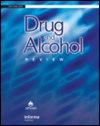Through the looking glass: An alcohol advertisement every 3 minutes
Abstract
Introduction
There is growing concern over the lack of regulation of alcohol advertisements on social media platforms frequented by youths. This study aims to build upon existing literature by assessing the frequency with which young Australians (17–25) are shown advertisements promoting alcohol use and the themes utilised in these advertisements.
Methods
A total of 125 Australian youths (mean age 18.74 years; 74.40% female) were recruited in exchange for course credit to participate in an online study. Participants scrolled through Facebook or Instagram for a period of 30 min and screenshotted any alcohol advertisements encountered. Participants then identified the advertisement qualities (or ‘themes’) present in the advertisements, based on pre-identified categories. Demographic, social media usage and historical personal, peer or familial substance use behaviour data was also collected.
Results
Seventy-one university students were exposed to 796 alcohol advertisements across both platforms, and they encountered an advertisement every 2 min and 43 s on average. Most advertisements included call to action features on both Facebook (78.80%) and Instagram (71.17%). Advertisements relating to ease of access (promoting subscription/home delivery; 41.72% and 42.56%) and sales incentives (special offers, promotions, samples or bonuses with purchase; 43.70% and 46.84%) were most common across both platforms.
Discussion and Conclusions
Alcohol advertisements are highly prevalent online, particularly among Australian youth social media users. Future research should endeavour to identify whether temporal use of alcohol is a predictor of subsequent exposure to alcohol advertising on social media, and whether this exposure is likely to increase successive alcohol use behaviours.

 求助内容:
求助内容: 应助结果提醒方式:
应助结果提醒方式:


